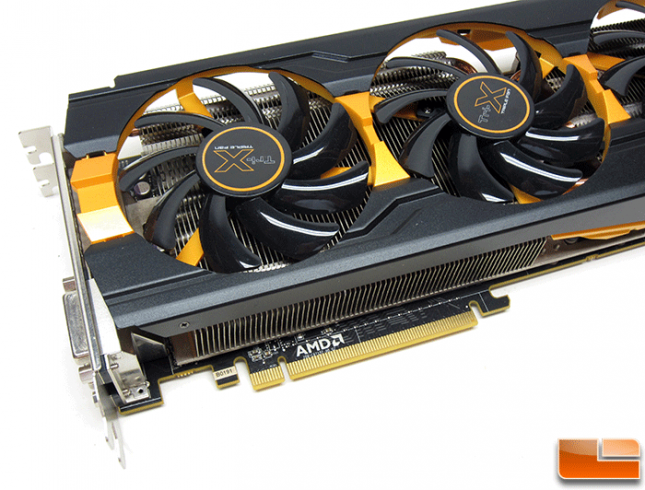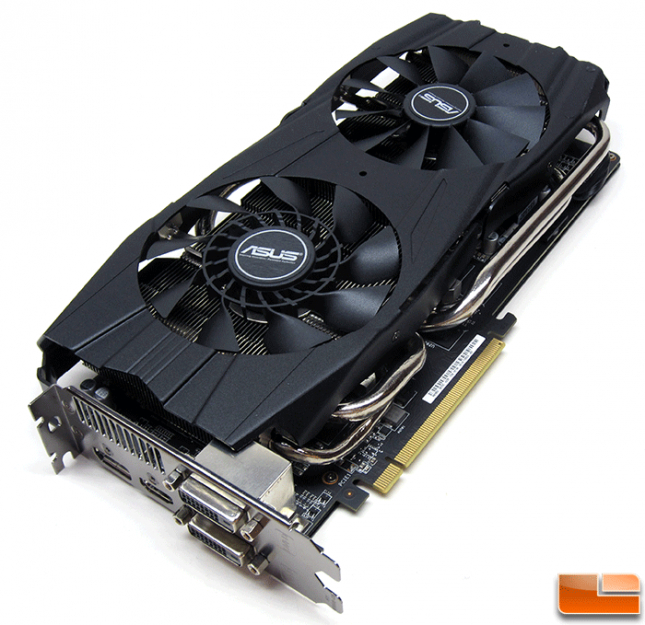ASUS R9 290X DirectCU II and Sapphire R9 290X Tri-X Video Card Reviews
Final Thoughts and Conclusions

The Sapphire Radeon R9 290X Tri-X is a great example of what happens when you slap a gigantic aftermarket cooler on the AMD Radeon R9 290X reference card. The Sapphire Tri-X GPU cooler allowed the card to be overclocked up to 1040MHz and the gaming load temperatures went from 94C to just 71C. This is a massive 23C temperature drop and it just goes to show that the AMD reference cooler really isnt that good as Sapphire was able to significantly drop the temperatures and run higher core and memory clock speeds. Often AIB companies save money with their custom coolers (although they raise prices on consumers), so it just goes to show that if you are going to get a Radeon R9 290X that you really should get one with a custom cooler. The Sapphire R9 290X Tri-X cooler does an excellent job cooling as the VRM 2 temperature location was 30C cooler on the Sapphire card! As you’ve likely figured out, the Sapphire Radeon R9 290X Tri-X isnt a fully custom card as it appears that Sapphire just bolted up the GPU cooler to the reference PCB and called it a day. That might be a bit of a letdown to some, but it means that it will work with most custom water blocks. This is important to note as fully custom cards are often a pain to keep water cool down the road.

The ASUS Radeon R9 290X DirectCU II is a fully custom card from the ground up. ASUS came up with their own PCB design and used higher quality Super Alloy Power (SAP) components. By doing a custom design ASUS is able to include features that the other brands cant and ROG Connect, reversed power connectors, and power LED indicator lights are examples of how ASUS is trying to differentiating their card from the dozens of other brands that have Radeon R9 290X cards on the market around the globe. They were also able to shorten the length of the PCB and their DirectCU II cooler isnt as long as the Tri-X cooler used on the Sapphire card we also looked at today.
You might have noticed that we skipped overclocking and we apologize for that. We were rushing to get out the door for CES 2014 and the AMD Catalyst 13.12 WHQL drivers were fighting us all the way. Every single time wed overclock either of these cards with Catalyst Control Center (AMD OverDrive) or with the companies respective overclocking utilizes wed get system instability. Basically the system would crash when the card went from 2D to 3D mode and then after it would restart it would do the same thing. We were stuck in a vicious loop as AMD OverDrive was loading up the previous unstable settings and there was no way to disable it. We were going into Windows 7 in safe mode, removing the drivers, going back into windows to re-install the drivers and then wed end up in the same spot moments later. Well attempt to overclock the cards next week when we return and will talk to AMD about the issues we were having.
UPDATE: Both cards were able to overclock to 1200MHz core and 6000MHz (effective) memory, which is very impressive.
So, what about cost? The AMD Radeon R9 290X reference card has an original suggest retail price of $549, but many retailers are asking for far more than that. The AMD Hawaii based video cards are priced sky high right now due what many think is the fact that Litecoin miners are paying whatever the cost to get high-end cards for their mining machines. This is bad news for AMD gamers as it has increased the price of some of the higher-end cards.
For example, Newegg has the Sapphire Radeon R9 290X reference card with BF4 for $629.99 plus $8.50 shipping. If you want to step-up to the custom cooled and overclocked Sapphire Radeon R9 290X Tri-X youll have to fork over $699.99 plus $5.92 shipping. So, you lose what is arguably a good game title and have to spend $70 extra bucks to get essentially get a better GPU cooler. That stings a bit and you can pick up an NVIDIA GeForce GTX 780 Ti 3GB video card with a game bundle for $699 as well. Usually a custom card like this is $10-$20 more, but not today! Sapphire informed us that the R9 290X/290 Tri-X video card models were released at an MSRP of $50 over the reference models and that they can not control what the retailers charge. The ASUS Radeon R9 290X DirectCU II is not out yet, but we are told that it should be available late next week for a suggested retail price of $569.99. Keep in mind that ASUS does not control what the retail sites and stores charge and we are sure that they are going to mark this card way up like they did with the Sapphire model. It makes it tough to suggest buying one of these cards for gaming when there is such a high markup on them right now. It should be noted that the Sapphire Radeon R9 290X Tri-X has a 2-year warranty and the ASUS Radeon R9 290X DirectCU II has a longer 3-year warranty.
At the end of the day both of these custom cards feature way better cooling than the AMD Radeon R9 290X reference card. With either of these cards you dont have to worry about the clock frequency being throttled in certain scenarios and that is really good news. Weve showed in the past that when the case temperature goes up that AMD PowerTune technology will throttle the core clock back and that hurts performance in order to maintain 94C. With these cards you are running well below 94C, so the average clock speeds will be the rated clock speeds when you are gaming. Improving the GPU really helps and makes the number one issue that people have with this video card for the most part a non-issue! If you can find a custom cooled Radeon R9 290X video card for around the suggested retail price we’d easily recommend it.

Legit Bottom Line: The ASUS Radeon R9 290X DirectCU II and Sapphire Radeon R9 290X Tri-X are both solid video cards that run cool and have great performance thanks to their factory overclocks.



